
Dec. 11, 2009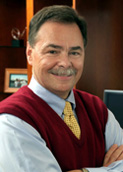 Fred Sanfilippo, MD, PhD |
|||
|
Wagner appointed to presidential bioethics commission Yerkes researchers create transgenic voles Research strategic plan to come in June
|
|||
We all have causes that inspire us and move us to action. Whether you choose to support children, seniors, people facing illness, or other neighbors in need, you're sure to find ways to bring help and hope to people in need right here on the Woodruff Health Sciences Center campus. Consider these examples:
Virtual can food drive
Did you know that the Atlanta Community Food Bank (ACFB) can provide six meals to a family in need for just $1? You can help fight hunger at the holidays by donating to ACFB at the Emory Clinic A concierge desk or at the registers in the cafeterias at other Emory Healthcare facilities. During last year's virtual can food drive, WHSC faculty and staff raised $3,606—more than 21,000 meals—for families in need.
MedShare International
You can improve both global health and the environment when you help MedShare International distribute surplus medical supplies and equipment to underserved medical centers in more than 75 developing countries. One Saturday each month, Emory Healthcare employees—joined recently by President Wagner and his wife Debbie—sort medical supplies and prepare them for shipment to countries where they are desperately needed.
Wesley Woods angel tree
Show a senior with no family or little income that they're not forgotten this holiday season. Pick up an ornament from the Wesley Woods angel tree and return a gift to Wesley Woods Hospital to help brighten the holiday for a senior in need.
Even if you don't have time to get involved directly with these or other causes this holiday season, just by belonging to the WHSC family you're making a tremendous difference in our community. Thanks, as always, for all that you do to help the Woodruff Health Sciences Center achieve its vision of transforming health and healing … together.
Best wishes for happy holidays and a healthy new year!
Please share your thoughts and feedback at evphafeedback@emory.edu.
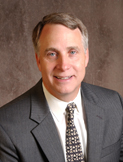 President Wagner
President WagnerWagner appointed to presidential bioethics commission
President Obama recently appointed President Wagner as vice chair of the newly created Presidential Commission for the Study of Bioethical Issues. Amy Gutmann, president of the University of Pennsylvania, will chair the commission, whose members will advise the president on bioethical issues that may emerge from advances in biomedicine and related areas of science and technology.
"This new commission will develop its recommendations through practical and policy-related analyses," President Obama said in a White House news release. "I am confident that Amy and Jim will use their decades of experience in both ethics and science to guide the new commission in this work, and I look forward to listening to their recommendations in the coming months and years."
President Wagner has championed the role of ethics in Emory's mission by enhancing the prominence of Emory's Center for Ethics and including ethical engagement as a pillar of Emory's strategic vision.
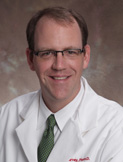 Donald Harvey
Donald Harvey
Winship opens unit for phase I clinical trials
Emory's Winship Cancer Institute has opened a unit dedicated to phase I clinical trials. The unit is directed by Donald Harvey, PharmD, (hem/onc) and is adjacent to Winship's infusion center, with more than 2,000 square feet of clinical and laboratory space.
Phase I trials are "first-in-human" studies conducted to determine the safety of new drugs and drug combinations as well as the best means of administering these drugs and optimal dose. They are a critical first step to developing more effective cancer treatments, including new chemotherapy regimens.
This unit was developed through collaboration with the Georgia Cancer Coalition and Georgia Center of Oncology Research and Education and is "a resource for the entire state," says Walter Curran, Winship executive director, who adds that community oncologists have expressed strong interest in such a unit. Read more.

Yerkes researchers create transgenic voles
Yerkes researchers have created the first transgenic prairie voles, rodents that are naturally monogamous, in an important step toward learning more about the genetics of pair bonding. "Domesticated lab rats and mice dominate biomedical research, but wild rodent species like voles with more complex social behaviors are better suited for investigating the biology of the social brain," says Zoe Donaldson, lead researcher in this project.
Yerkes researcher Larry Young will use this technology to determine whether monogamy and its associated social behaviors can be affected by manipulating a single gene. Researchers are also investigating ways to refine this technology to alter gene expression in certain brain regions as well as at certain developmental milestones. Read more.
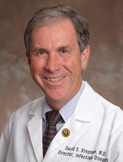 David Stephens
David Stephens
New research strategic plan to come in June
A planning process is under way that will result in a new five-year (2010-2015) research strategic plan for the WHSC by next June. David Stephens, VP for research, is directing this process, which is led by executive and research advisory committees.
Working groups, including a broad mix of faculty and leaders as well as partners and affiliates, are addressing eight focus areas: (1) research infrastructure, platforms, and cores, (2) recognition and rewards, (3) partnerships, (4) interdisciplinary research, (5) institutional support, (6) integration of research with clinical mission, (7) training and education, and (8) research-focused centers.
The planning process will take into account basic resource needs for WHSC research, including people, space, and money. Fundamental questions informing the process include the following: What are the next areas for growth and cutting-edge research? In what scientific areas does the WHSC want to be a national or international leader? What would differentiate the WHSC from other health sciences centers?
The schools of medicine, nursing, and public health and Yerkes Primate Center are also in the process of forming new research strategic plans, which will be integrated with the WHSC plan.
The final plan is expected to (1) define the strengths, weaknesses, opportunities, threats, and major gaps in the research mission, (2) outline strategic recommendations, including priorities and timing, to address the gaps, including projections for resource needs in people, programs, and space, (3) identify measures of success, and (4) define strategy and tactics to identify cutting-edge research and the next new set of ideas.
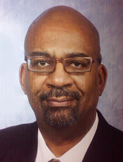 Booker Gibbs
Booker GibbsNew recycling measure enhances safety, reduces waste and cost
Traditionally, when needles and other used "sharps" are disposed of in those biohazard containers that one sees on the wall in every doctor's office and hospital room, both the sharps and the containers have ended up in landfills. A new system being implemented to recycle these containers has several major advantages: it helps prevent accidental needle sticks, reduces Emory's landfill footprint, and saves tens of thousands of dollars each year.
Emory Healthcare is using a service by Stericycle Inc, which picks up the containers, sterilizes them, and packages them for reuse.
"Traditionally, nurses or nurse technicians would bring the sharps containers to the utility room and empty them," says Booker Gibbs, director of environmental services for Emory University Hospital Midtown. "Until recently, Emory Healthcare employees would place an order electronically to have nursing services pick up the containers. Some containers were overfilled, and that presented a safety issue for anyone who disposed of a sharp in one of those containers or who had to pick up the container."
The service comes two to five times a week, depending on volume, and swaps out the containers. The full containers then are taken to a Stericycle facility, placed on a conveyer belt, and dumped by machines (so no Stericycle employee is stuck either).
In addition to improving safety, the sharps management system saves money by decreasing Emory's biohazard trash. Typically, EUH Midtown has 16 to 20 tons of "red bag" waste each month. For the month of October, the hospital had only 12 tons, Gibbs says, which represents a 20% reduction. A 20% reduction for all of Emory's hospitals together translates into potential savings of $100,000 annually, says Gibbs.
In addition to EUH Midtown, Wesley Woods and EU Orthopaedics & Spine Hospital currently use the service. Emory University Hospital is slated to begin in January.
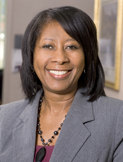 Doris Billingsley
Doris Billingsley
Bio stats:
• Training specialist, Org Devel & Learning, EHC
• Director, Alzheimer's unit, Budd Terrace
• Staff member, Corp. Quality, Wesley Woods
• Long-term care social worker, Beverly Enterprises
• MS, Counseling & Psych Services, Georgia State Univ.
• BS, Criminal Justice, UAB, Birmingham
Contact:
doris.billingsley@emory
healthcare.org
Enhancing employee skills, knowledge, and personal satisfaction
One in a series of profiles of people in the Woodruff Health Sciences Center
If you recently began your career at Emory Healthcare or if you are honing your leadership skills, you probably either know Doris Billingsley or one of the classes she helps create and facilitate in Emory Healthcare's Organizational Development and Learning Services Department.
A training specialist, Billingsley sees her job as helping employees work more effectively and creatively, with a better impact on the patients they serve and the employees they manage and with a stronger sense of personal satisfaction.
One of her biggest responsibilities is new employee orientation, held biweekly. For two consecutive days, new employees, sometimes as many as 30 per session, learn how Emory Healthcare is structured, the roles the employee's job and department play in the overall system, and what resources Emory Healthcare offers—from benefits and transportation to career development. They also learn what is involved in patient safety, confidentiality, and other issues emphasized by Joint Commission guidelines.
Billingsley teaches employee classes, but what she loves best is designing and developing them. She developed a popular four-hour class with colleague Sue Miller, for example, about cultural competency and sensitivity in health care, which is available to individuals as well as groups. She and her colleagues also recently developed two certification programs, one for emerging leaders and the other for those already in leadership roles.
Billingsley knows Emory Healthcare well. After receiving her masters in counseling in 1986, the former social worker worked at Wesley Woods as part of the corporate quality department, then as director of the Alzheimer's unit at Budd Terrace. During her eight-plus years in her current department, she has helped alter the training program in response to changes in health care and the workforce and more recently to the economic downturn.
"We have to be more creative and more mindful about demands on people's time," she says. "We offer more online training and blended learning than in the past, and as our workforce becomes more diverse in ages and learning styles, we have to remain flexible in what we teach and how we teach it."
It makes her proud, she says, that even in tough times Emory Healthcare has continued to invest resources in keeping its employees at the cutting edge of technology and service.
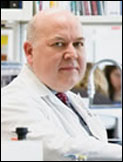 Jacques Galipeau
Jacques Galipeau
• Regenerative medicine expert joins Emory
Georgia Cancer Coalition Distinguished Scholar Jacques Galipeau, an expert in gene and cell therapy for cancer and immune ailments, has joined the faculty in Winship Cancer Institute and pediatrics and will serve as deputy director of the Georgia Tech-Emory Center for Regenerative Medicine (directed by Robert Nerem in biomedical engineering). Galipeau brings his considerable experience to Emory to establish a new cell therapy facility that will conduct "first-in-human" clinical studies of innovative therapies. Read more.
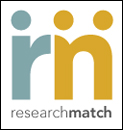
• New website matches research volunteers with studies
Emory University is one of 51 institutions participating in a new national, secure recruitment registry for clinical studies. People who want to participate in such studies can now connect online with researchers nationwide by joining ResearchMatch.org, a new website, sponsored by the NIH's National Center for Research Resources. Read more.
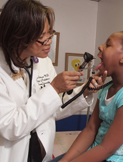 Veda Johnson
Veda Johnson
• Zeist Foundation donates $3 million to pediatrics
A $3 million award from the Zeist Foundation will fund development of an urban health program in Emory's pediatrics department to help improve outcomes for at-risk children throughout metro Atlanta and the state. The funding will be used to help develop school-based health clinics similar to those in the Whitefoord Community Program, which was co-founded by Emory pediatrician Veda Johnson. The funding also will be used to fund literacy and other initiatives for underserved children. Read more.
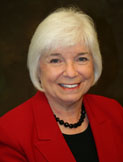
Cathy Wood
• Rapid-response team recognized statewide
Emory's Code MET (medical emergency team) has received first-place recognition from the Georgia Hospital Association in the hospital/health system category for reducing cardiopulmonary arrests and overall patient deaths. Code MET, a rapid-response concept originating in Australia and first implemented in Emory's hospitals in 2006, is aimed at empowering all those who come in contact with inpatients—from clinical and ancillary staff at all levels to patients' family members—to call a "code" and summon emergency help if they observe signs of patient duress.
Over the past three years, the team has worked painstakingly to expand Code MET throughout the entire Emory Healthcare system and to increase its use by individual staff and family members. In 2007, the number of Code MET calls was less than 25 per 1,000 discharges. Now, it exceeds the national benchmark of 30. The numbers of cardiopulmonary arrests and deaths correspondingly have seen a downward trend.
"We have worked to identify and remove barriers to using the process and to convince people that there is no such thing as a bad Code MET call," says Cathy Wood, EHC's executive director of nursing systems.
"For patients' families, we also defined explicit triggers to look for, such as difficulty breathing, inability to talk or be awakened, change in skin color, confusion, weakness, or numbness," says Wood, who stresses that improving Code MET remains an ongoing process.
Read a related story about how two housekeeping staff saved a patient by calling a code.
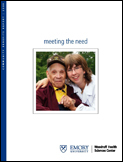
• 2009 WHSC community benefits report now online
Do you know that last year. . .
• the WHSC invested almost $98 million in unrecovered costs of doing research as well as $14 million (almost one-quarter of its tuition income) in financial aid for students,
• Emory Healthcare invested almost $70 million in WHSC teaching and research missions,
• 250 Emory faculty provided care and conducted research at the Atlanta VA Medical Center, the largest, most complex tertiary VA facility in the Southeast,
• Emory physicians provided $49 million in charity care over and above millions in unreimbursed care provided at Grady,
• the WHSC had an estimated economic impact on the metro community of $5.7 billion,
• the WHSC employed more than 18,000 people and its research income helped generate or sustain approximately 14,000 jobs in the area.
These statistics and others are found in the WHSC's 2009 Community Benefits Report, which is shared with policy-makers, government agencies, local and regional business leaders, and health care organizations across the country. The book also includes heart-rending stories of patients who receive high-quality care and large measures of compassion day in and day out, whatever their ability to pay.
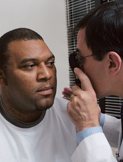
• Clinical investigator grant funding available
Junior MD or PhD faculty members who are committed to an academic career in clinical and/or translational research are encouraged to apply to the KL2 Mentored Clinical and Translational Research Scholars Program. Award recipients must devote 75% professional effort to the program. Applicants who are funded will receive 75% salary support, a technical budget ($25,000 per year) for research costs and tuition, and some salary support for the KL2 scholar’s lead mentor.
This program is supported by the Atlanta Clinical and Translational Science Institute (ACTSI). Please see the program’s website for more details. Those interested in applying are urged to contact Cheryl Sroka at the ACTSI Research Education, Training, and Career Development program office at 404-727-5096 or csroka@emory.edu.
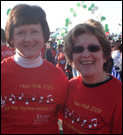 Becky Provine and Marilyn Margolis
Becky Provine and Marilyn Margolis
• Heart walk raises more than more than $270,000
Emory participants in this year's American Heart Association heart walk—the 1,741 walkers and the donors who supported them—collected more than $270,000 (final sum still being tallied). Congratulations to the team, and special thanks to event coordinator and Emory Healthcare administrative fellow Rebecca Migliaccio.
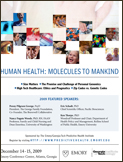
• Fifth annual predictive health symposium
The fifth annual Emory/Georgia Tech Symposium on Predictive Health will take place at the Emory Conference Center, Dec. 14-15. The theme is "Human Health: Molecules to Mankind." In addition to speakers from Emory and Georgia Tech, the roster includes presenters from CDC, University of Washington, the Bravewell Collaborative, University of Michigan, Pacific Biosciences, and National Jewish Health. For more details about the program or to register, go to website.
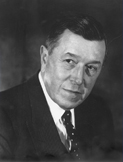 Robert W. Woodruff
Robert W. Woodruff
• Remembering a transformational giver
December 6, 1889, marks the birth date of WHSC benefactor and visionary philanthropist Robert W. Woodruff, former president and chair of the Coca-Cola Company. For nearly 50 years, Woodruff's commitment to transforming health and healing was evident in his ongoing generosity to help build a premier health education, research, and patient care center here at Emory. Throughout his long life, he gave nearly $350 million to charity. Of that total, more than 65% ($230 million) was directed to Emory, and many more hundreds of millions of dollars have been given to Emory since his death through the Woodruff family of foundations.
It all started with a Depression-era gift of $50,000 (an amazing sum in 1937) to establish a cancer clinic on the Emory campus—now the Winship Cancer Institute. Thus began Woodruff's half century of service to Emory. In 1979, he and his brother George gave Emory $105 million, the largest gift on record at the time to any institution of higher education in the nation.
More than a decade after Woodruff's death at Emory University Hospital in 1985, his family foundation donated an additional gift of Coca-Cola shares to establish the Robert W. Woodruff Health Sciences Center Fund. This gift, now worth approximately $700 million, funds programmatic efforts that help make WHSC the 21st century model of an academic health sciences and services center.
"Mr. Woodruff was the kind of man who worked diligently behind the scenes to effect positive change without drawing attention to himself or demanding credit," says EVPHA Fred Sanfilippo. "Every day, I see his legacy of service to the greater good reflected in the extraordinary work of our WHSC faculty and staff—proving that he helped shape not only our organizational development, but our character as well."
